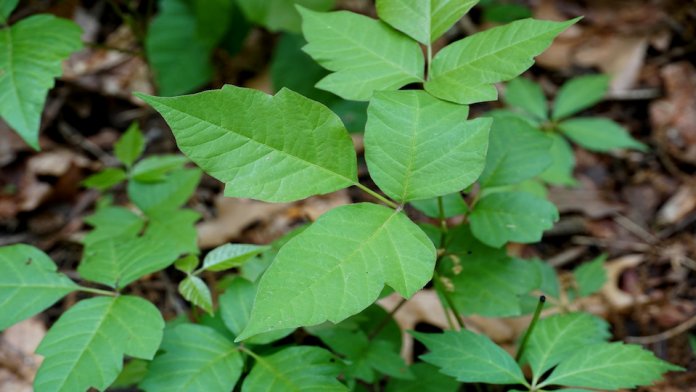As a naturopathic doctor and an amateur naturalist, I try to avoid thinking about particular plants or animals as good or bad. I understand that all living organisms are a part of the bigger ecosystem, and each species has its own unique role in the health of the whole system. But, (and it’s a big BUT) when I’m scratching my skin raw and am up all night with a case of poison ivy…it’s hard not to think of that plant as pure evil. And these days, on my morning hikes, it’s popping up everywhere. Here’s a useful article from my team at UpWellness all about Toxicodendron radicans…including how to identify it, prevent it, and treat it if you get it.
-JL
It’s that time of the year again when we all love to get out and do some hiking and exploring as we welcome warmer temperatures and spring thaw. It is also the time that the poison ivy is coming to life, rearing its ugly head after a long winter’s nap. If you have been unfortunate enough to meet up with poison ivy you know just how painful this condition can be. The itching and the burning can be quite intense and only make matters worse. Thankfully, there are several natural remedies that can end your suffering and help your body recover.
Identifying poison ivy and staying protected
Of course, the best way to avoid the unpleasant side effects of poison ivy is to steer clear of it in the first place. Poison ivy is a vine that grows everywhere in the United States except the Southwest, Alaska, and Hawaii. It has thin pointy leaves that are shiny, but you have to be careful because the shape and color of the leaves varies. One of the most identifiable features of poison ivy is its bunches of three leaves – this leads to the common expression “Leaves of three, let them be.”
Poison ivy contains urushiol oil ( the active component that causes the terrible rash) in all parts of the plant including the roots, leaves, and stems. It is very easily transferred from clothing or pet fur to human skin… ouch!
Besides knowing what to look for, you can also protect yourself in the great outdoors by wearing proper attire. Long sleeves, long pants, tall socks, and hiking boots are recommended if you plan to be out in the woods where poison ivy is plentiful. You can even tuck your pants inside your socks to avoid anything creeping up from the bottom!
Natural ways to ease the pain and itch of poison ivy
Wash, wash, wash with a strong soap and water using a washcloth or sponge. Scrub all exposed and affected areas well.This helps to remove the plant’s oil and lessen the chance that you will have a reaction. The key here is to do this as soon as possible after exposure. Make sure that you wash thoroughly under your fingernails and throw any towels that you use immediately into the washer.
Apple Cider Vinegar
Apple cider vinegar may seem like an age-old remedy for everything, but it does have the capability to stop the pain and inflammation of poison ivy quickly. Soak some cheesecloth in apple cider vinegar and place it on areas of exposure. It has a cooling effect that feels great. Apply as often as needed for relief.
Oatmeal Bath
Oatmeal contains chemicals such as avenanthramides and phenols that have a powerful anti-inflammatory effect on the skin. With a reduction in inflammation comes a reduction in pain and itchiness. To make an oatmeal bath, blend one cup of oatmeal until it becomes a fine powder. Add some water to the oats to test if it is ready for the bath. If it turns milky, it is ready. If not, grind some more. Pour the oatmeal powder into a tub or running warm water. Soak in the bath for about twenty minutes.
Banana Peel
It may seem strange that putting a banana peel on your skin would bring relief to poison ivy, but it seems to work. The minerals and potassium present in the inner side of the banana peel help to soothe itching and irritation caused by the poison rash. Additionally, many people find relief from open blisters using a banana peel compress. To make a compress, place a banana peel over the affected area and secure with a piece of gauze or tape. Leave the peel in place for about 40 minutes. Repeat several times a day until the symptoms improve.
Baking Soda
Besides being a great air freshener for your refrigerator, baking soda is also a popular natural remedy for the sting and itch of poison ivy. The best way to use baking soda on an early rash is to make a paste using one part water and three parts baking soda. Apply this paste to the affected area and allow it to dry completely. Allow the paste to sit on the skin for a while before rinsing with warm water.
-The UpWellness Team


